You may be interested in growing walnut trees from a walnut seed but heard that they are hard to germinate and grow. You may also be wondering if the stories about walnut trees killing other plants near them are true. Well, you have come to the right article as we have researched the answers to these questions to help guide you to successfully growing walnut trees from seed.
You can easily grow a walnut tree from a walnut by following these steps:
- Choose an unprocessed walnut.
- Separate the nuts from the green husk.
- Place in water. If it sinks then the nut is viable for germination. Discard the nuts that float.
- Soak in water for 48 to 72 hours.
- Germinate in a cool location such as the refrigerator, planting the nut in 1 to 2 inches of sand and peat moss. Let it stay from 90 to 120 days.
- Once germinated plant walnuts on the ground or in pots with potting soil.
Now that you know how to grow a walnut tree from a nut, you may want to get into the details and other factors to ensure your success rate. It is a good thing that we have taken the time to research all these for you, so read on and get the information you are going to need to grow and enjoy the "nuts" of your labor!

How Do You Choose a Walnut Seed to Plant?
It would be really hard to grow a tree from a grocery brought walnut because they will most likely be processed or are hybrid varieties that will not grow under your local conditions.
You can pick walnut seeds in your area or purchase seeds from trees within 100 miles of your area to ensure that they are adapted to your conditions. To be sure, check your USDA hardiness zone for the type of walnut you are thinking of planting.
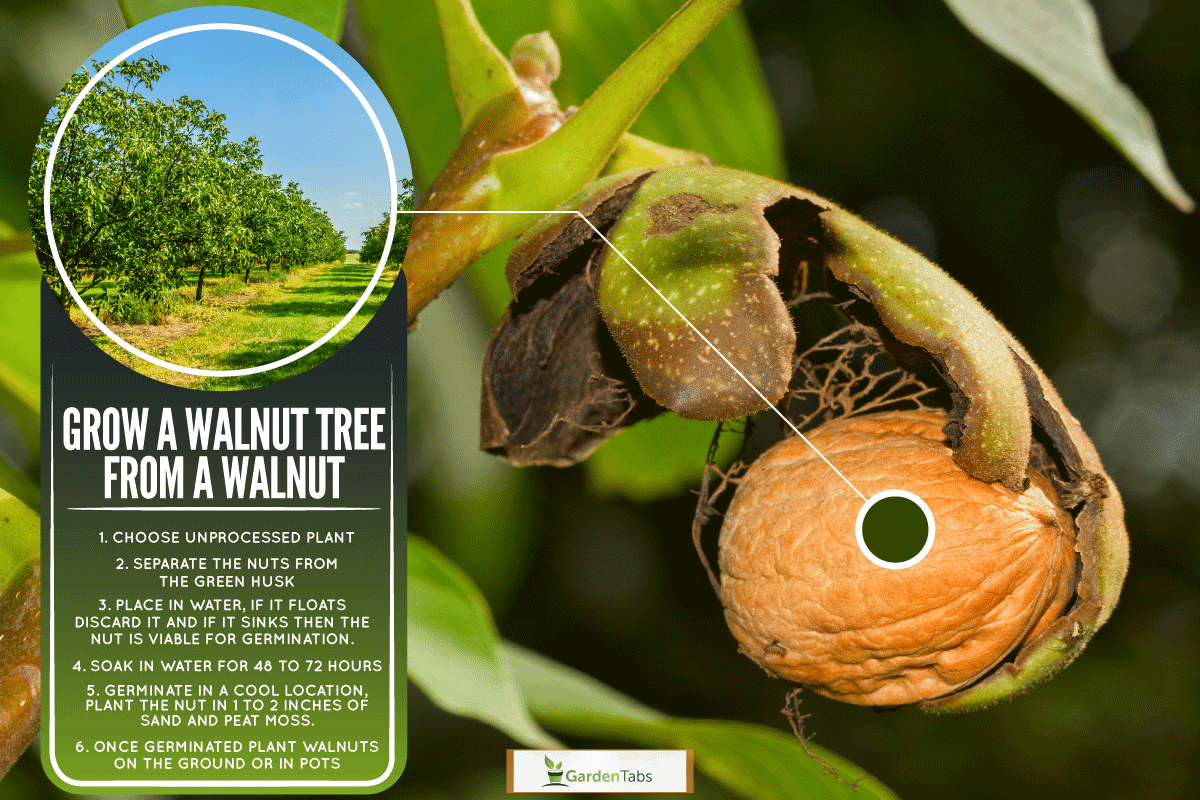
To further ensure your success, remove the husks to check the nut for damage. You may easily do this by soaking the walnuts in a bucket of water to soften the husk, then cracking and peeling the husk. This may take up to three days of soaking for the hardest walnuts.
Where Should You Plant Your Walnut Tree?
While walnut trees are attractive shade trees you may want to reconsider planting them near your house for several reasons. First, there is the potential for foundation damage. Then the nuts may damage the blades of your mower. Lastly, there is the allelopathic property that inhibits other plants from growing nearby.
A safer choice is to plant the walnut tree far from the house and your Permaculture zone 1 and 2 edible gardens. Make sure to choose a spot that is not prone to water-log, frost pocket valley bottoms, or compact soil. Lastly, plant your walnut tree in full sun as they will not grow well under the shade.
How Do You Plant a Walnut?
To plant a walnut from germination make sure that you keep the seed moist up until you plant them on the ground. A germinated seed will have a sprout sticking out of the hard shell.
The soil must be well-draining loamy soil up to three feet deep. This means that you may need to prepare the soil by digging, loosening, and amending the soil.
Remove existing vegetation so that they do not compete for the same nutrients that the growing tree will need. Dig a hole 2 to 3 inches deep and plant the walnut seed sideways before covering the hole with soil. If you are planting multiple trees make sure that they are spaced 12 feet apart. You may plant two seeds 8 inches apart, eliminating the least healthier as they grow.
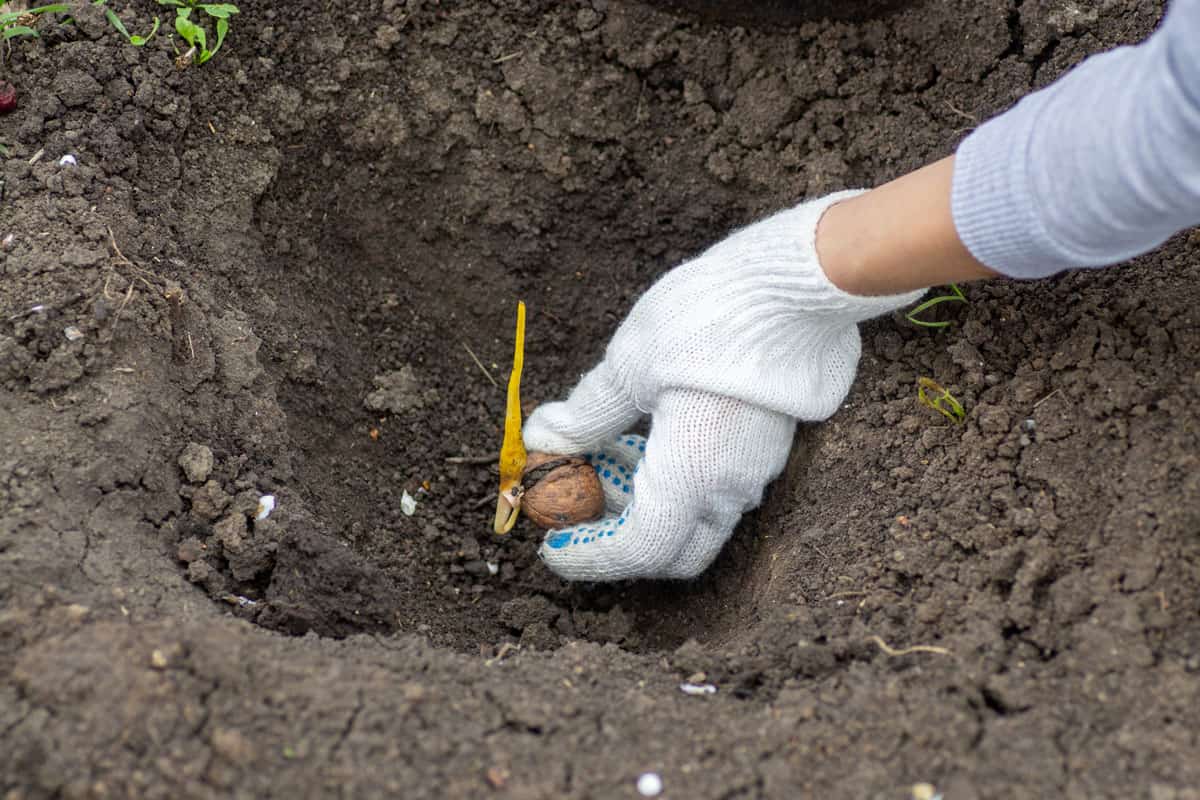
How Do You Plant a Walnut Sapling?
To ensure success you may choose to plant a sapling instead of a seed. To do this, measure the diameter of the seedling 1 inch above the root collar. The seedling must measure at least 1/4th inch or larger to maximize the probability of healthy growth.
Plant the seedlings during spring, making sure that the soil is loamy and well-draining. Dig a hole twice the diameter of the root ball and place the sapling root inside the hole.
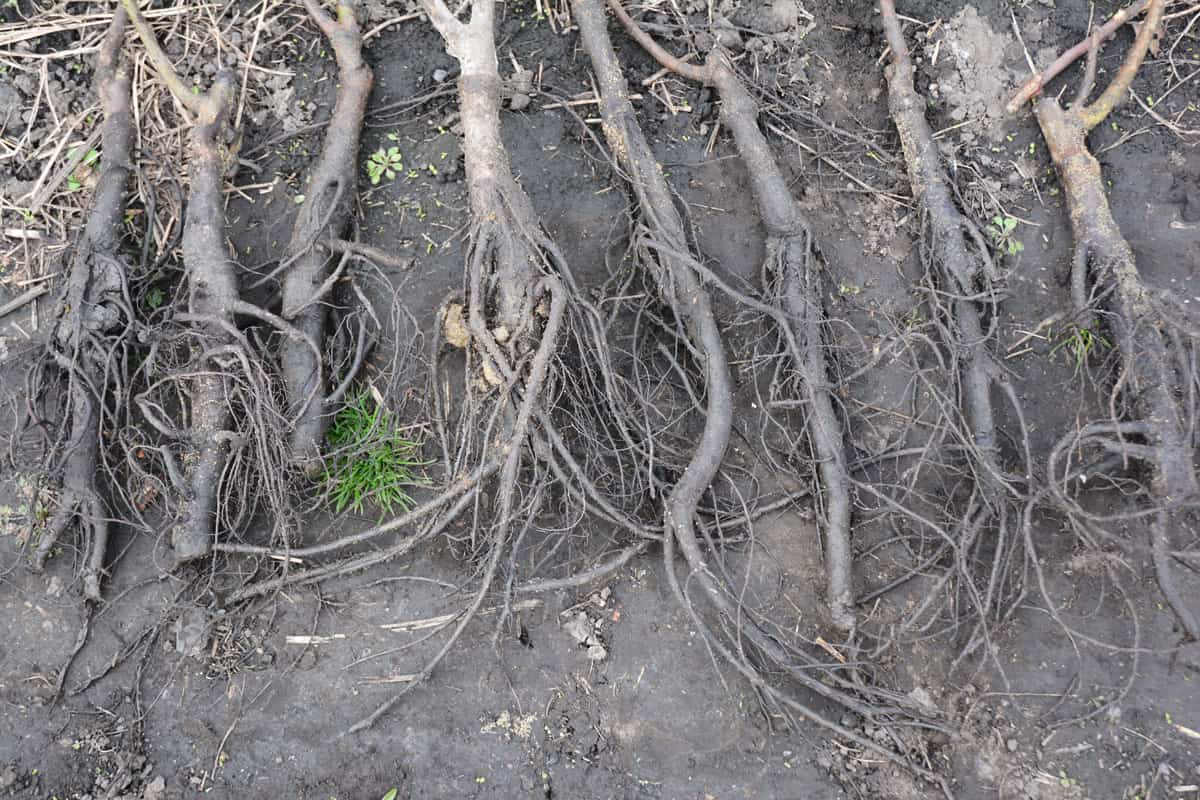
Keep your walnut sapling root moist until you plant them.
Should You Prune Your Walnut Tree?
There are many benefits of pruning your walnut tree. First of all, it will ensure the timber growth and nut production of the tree. Secondly, it will eliminate diseased and weak branches that siphon off nutrients to healthier parts of the tree.
However, walnut trees need minimal pruning compared to other kinds of fruit trees. You prune walnut trees during their 1st to the 2nd year to train their shape, which is important to increase production quantity and efficiency of harvesting.
How Do You Prune Your Walnut Tree?
You may start pruning on the 1st to 2nd year of the walnut tree by first determining the central leader position which is typically the main trunk with about 5 branches growing on the side. It is also based on the natural growth of the tree where the central leader helps bring nutrients to the fruit-bearing branches. The idea is to allow open light circulation to the central leader while eliminating weaker, dead, and diseased branches that take away nutrients to the more important branches.
Make sure that you use clean shears or saw when pruning to prevent any disease from developing. Also, take care not to skin the bark of the cut branch. You may also paint acrylic or latex paint over the open cut to seal it off against disease.
When you start pruning leave one main branch and prune off the rest below it. This way the tree can direct all the nutrients to that branch. After this first pruning regularly prunes every 3 years.
You can also observe the "3 to 1" rule, which means that you should remove any branch that is 1/3rd the diameter of its trunk by cutting it at a 45-degree angle. The idea behind this rule is that having more than 1 thick branch makes it harder for nutrients to reach the walnuts.
Lastly, cut off any forked branch as it will require more nutrients and lessen the nutrients reaching the fruit-bearing branches. You can cut off the smaller of the two branches.
Check out these Pruning Shears from Amazon.
What Kind of Soil Does a Walnut Tree Need?
Walnut trees like deep (36 inches minimum), well-draining, moisture-holding fertile loam, and sandy loam soil with plenty of organic matter with a pH of 6.5 to 7.2. . This prevents root rot while making sure that there are enough nutrients to establish a strong tree.
Check out this compost from Amazon.
How Long Before a Walnut Tree Bear Nuts?
In the wild, a walnut tree will bear fruit in 7 to 8 years. However, you can opt for a faster option by planting budded trees that will bear fruits in 5 years. Nut production peaks at 30 years.
Because most cultivars bought are 2 years old, you can start seeing fruits on the 3rd year of planting. Once the tree starts to fruit it will produce progressively more abundant as time goes by.
Will Walnut Trees Kill Other Plants?

Black walnut trees secrete a chemical called juglone that is toxic to many other plants. Juglone is secreted via the roots of the tree but also are present in leaves, decaying fruit, and branches. Rainwater in contact with these parts of the tree can also spread and leach the toxin into the soil.
This is why you need to plan what you will plant near walnut trees. You need to choose plants that are resistant to the juglone toxin. The good news is that there are plenty of plants that are capable of resisting the walnut toxin.
What Can you Plant Near Black Walnut Trees?
While walnut trees have toxins that prevent other plants from growing around them as mentioned, some plants are resistant to their toxin. You just have to choose juglone-resistant plants such as:
- Corn
- Garlic
- Onions
- Leeks
- Squash
- Melon
- Beets
- Carrots
- Parsnips
- Lima Beans
- Snap Beans
- Cherry
- Raspberry
Will Walnut Tree Roots Damage Foundations?
Walnut tree roots can damage foundations, sidewalks, and pavements. This is because they spread wide lateral roots besides having deep taproots. The roots cause damage by lifting the concrete causing cracks, seeking cracks and widening them, or shrinking the soil causing the foundation to settle.
How Far From Your Wall Do You Need To Plant a Walnut Tree?
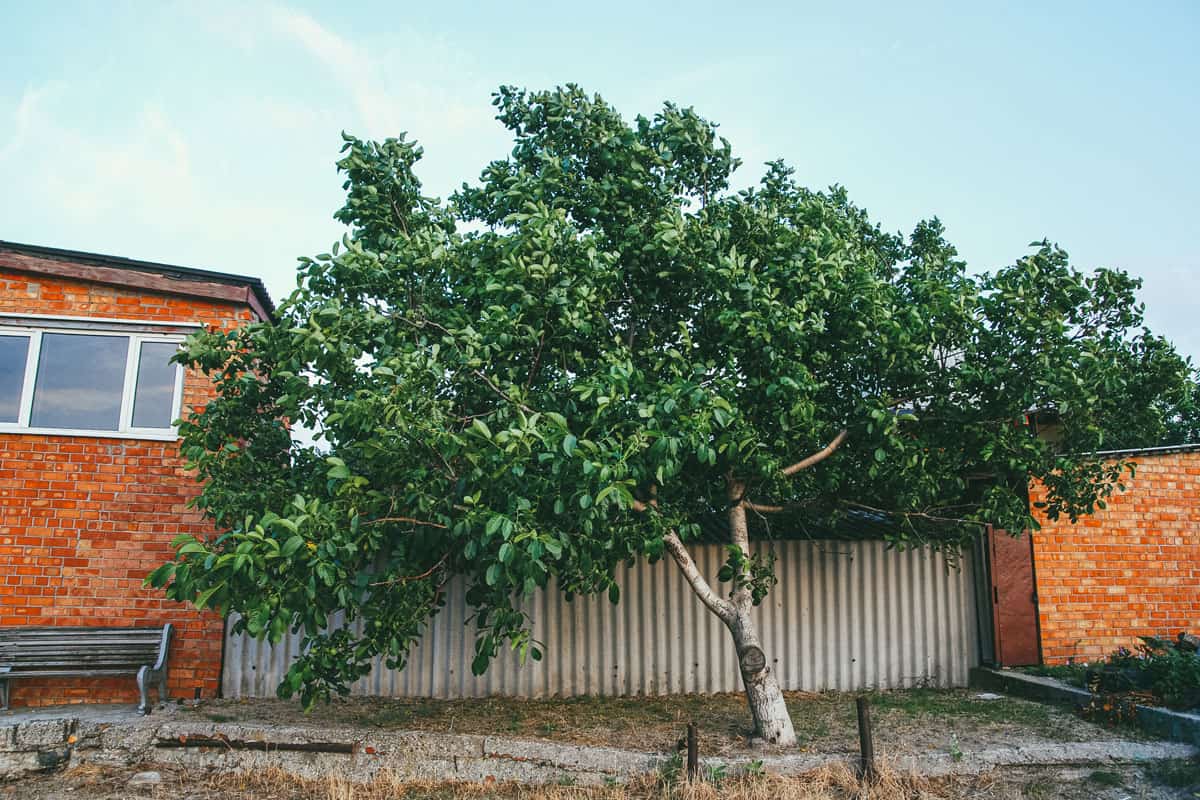
Mature walnut tree roots spread laterally 2 to 4 times the size of the diameter of the tree canopy. This means that the root system may spread up 50-75 feet in circumference! The roots spread at the depth of 3 to 7 feet laterally, with the top 6 to 24 inches having the most horizontal feeder roots where most of the decaying organic matter will be.
This means that you should not plant walnut trees close to your house or retaining wall. You should have a distance of at least 25 feet away from your house or a retaining wall.
Before We Part Ways
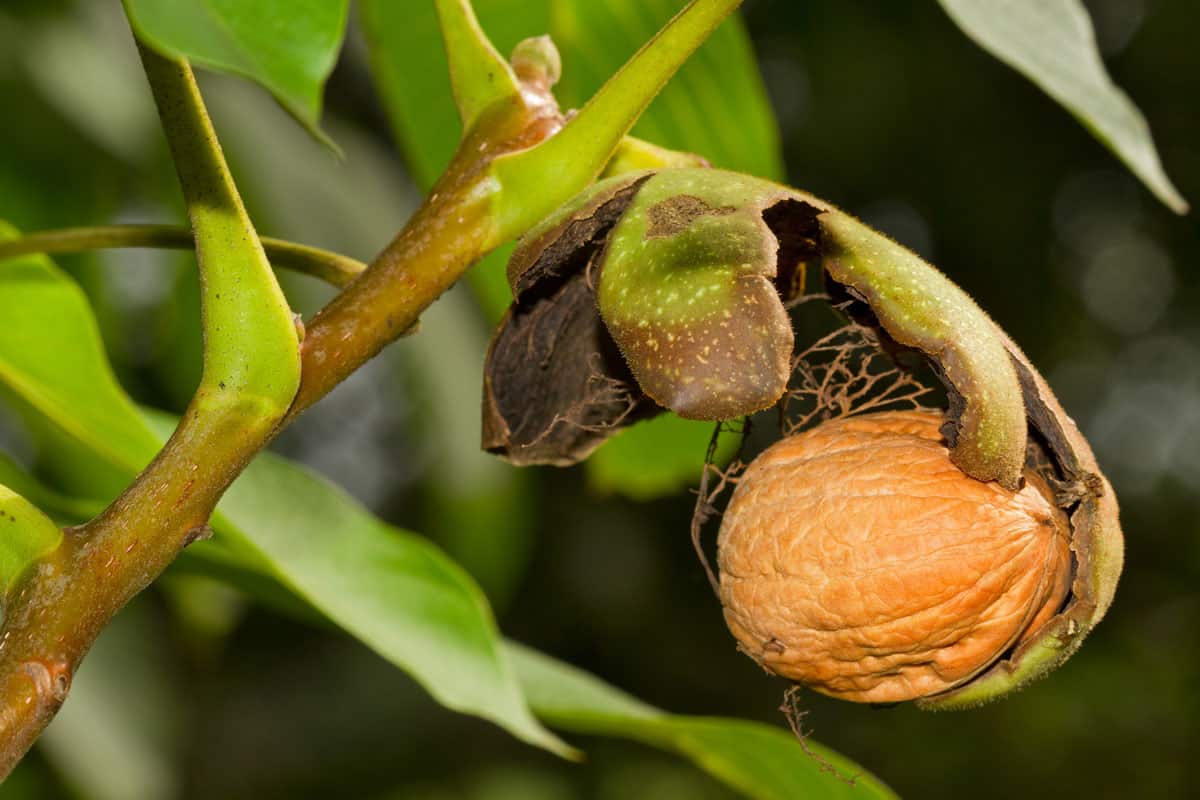
Growing a walnut tree takes a bit of know-how and a lot of patience. Now you know more about the process, so you'll be ready to start on your own arboreal adventure.
Now that you know everything you need to know on how to grow a walnut tree from seed, you may want to check out these other related articles:



We have a walnut tree generously donated by a squirrel in 2016 in a garden pot. We only dicovered this after moving house and leaving our pots in our allotment for a couple of years while we sorted out our new garden. It was autumn 2017 before we discovered an unknown growth (12ins high) in said pot. Autumn 2018 approx 20/24ins; by 2020 up to almost 36ins, and in 2021 we planted in a suitable spot. It obviously liked it there, and in 2022 it put on enough to reach approx 7/8 feet in total b autumn 2022. A single growth, with no signs of any branches
Should we do anything to encourage branches, e.g. lop anything off the top of what is a very healthy tree of about 8’6″, or just leave it to develop as it decides? We have in the past lived in two different houses, each with very mature and productive trees, but as far as I can recall they each had mature branches spreading at a height of about 8 feet from ground level. I can send amateur photographs of the present young tree. I will be grateful for any hints you can give.